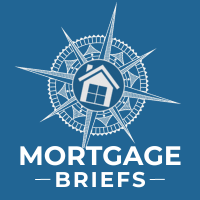Personalize Your Blog Reading Experience
Choose your preferred content version
Current Reading Level:
Comprehensive
Introduction:
The landscape of Canadian homeownership has been experiencing tectonic shifts, primarily influenced by critical decisions from the Bank of Canada (BoC) and regulatory authorities. Intended to steady economic scales and rein in rampant inflation, these choices have had complex repercussions, particularly felt by the homeowner community. This context calls for a nuanced examination of recent policy maneuvers that, while stabilizing one economic sector, seem to offer an upper hand to big financial institutions, often at homeowners' expense.
1. The Ripple Effect of Interest Rates Hike
The BoC's strategy of escalating interest rates from a mere 0.25% to a staggering 5.0% centered around diffusing the ticking time bomb of historical inflation. This steep hike, although effective in theory, has inadvertently unleashed financial pressure among homeowners, especially those juggling variable rate mortgages. The leap in payments has stretched household finances thin, introducing unforeseen stress into family economies.
2. Navigating the Currents of Quantitative Tightening
The Bank of Canada's strategic move towards Quantitative Tightening (QT) marks a stark shift from previous economic measures. Instituted as a bulwark against persistent inflation, QT involves reducing the central bank's financial assets to constrict the money supply, an about-turn from the 'easy money' policies of recent years.
This tightening measure, while broad in its economic implications, has a pointed impact on a specific segment of homeowners: those approaching the renewal phase of their fixed-rate mortgages. As QT exerts upward pressure on interest rates, it ushers in an era of more expensive borrowing, directly affecting the terms available during mortgage renewals. Consequently, homeowners who once locked in favorable rates are now bracing for a steeper financial commitment, highlighting the need for nuanced foresight in personal and national economic planning.
3. OSFI’s Rigidity: The Renewal Bind
OSFI’s unyielding stress test rules create a particularly restrictive scenario for homeowners approaching their mortgage renewal period. In an environment where economic logic would advocate for market exploration, these individuals are ensnared by current regulations, significantly limiting their financial mobility. It's a situation that underscores a restrictive trade-off: stay with your current lender or face the stringent barriers of requalification. For other homeowners, the issue is on the horizon — an unwelcome guest that may arrive at their financial doorsteps in the future, demanding prudent forward-planning.
Interpreting Implications for the Everyday Homeowner
These regulatory tactics, while theoretically sound, echo through households as escalated monthly payments, constricted financial breathing room, and a dearth of alternatives at the mortgage renewal crossroads. Conversely, major banks find themselves in a favorable playground with diminished competition and an anchored clientele.
Concluding Thoughts
While the rationale guiding these economic decisions is rooted in commendable objectives — taming inflation, fortifying financial infrastructure, and minimizing the perils of bloated household debt — the tangible consequences for homeowners cast a long shadow. It underscores the imperative for regulators to weigh the domino effects of their strategies, keeping the everyday Canadian homeowner's experience in the foreground.


